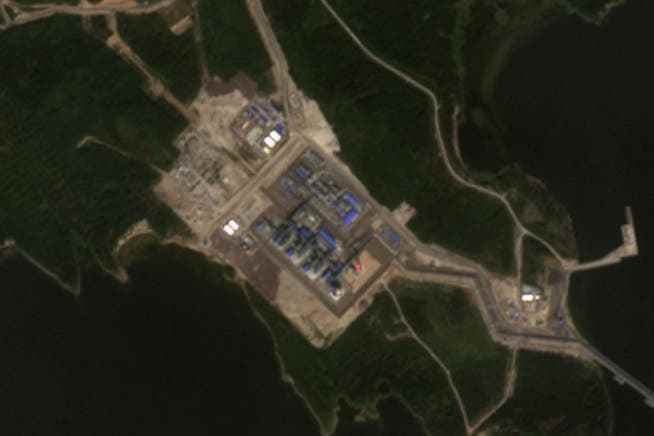A huge flame has been blazing over a Russian production plant near the Finnish border for weeks. Russia seems to be burning natural gas there in a targeted manner, which it no longer wants to send to Europe through the Baltic Sea pipeline.
The blaze over Russia’s Portovaya natural gas production plant can be seen from the Finnish border.
After Russia massively curtailed its gas supplies to Germany, it is now said to be systematically burning off large quantities of natural gas. He writes this British news channel BBC citing Norwegian energy consultancy Rystad Energy. According to his analysis, around 4.34 million cubic meters of natural gas go up in flames every day in the Portovaya production plant northwest of Saint Petersburg.
Finnish broadcaster Yle had previously pictures published, which private individuals had taken in near the Finnish-Russian border. A huge blaze can be seen in the photos, reaching well over a section of forest. The fires are also confirmed by the American space agency Nasa. Its fire monitoring system has continuously reported flames near Saint Petersburg since June.
Near Nord Stream 1
The new plant in Portovaya, which will produce liquefied natural gas, is close to the compression station from which Russia sends gas to Germany through the Nord Stream 1 Baltic Sea pipeline. The state-owned energy company Gazprom reduced its deliveries to Europe by 60 percent in mid-June, but has since turned off the gas tap.
Currently, a fifth of the full transport capacity still arrives in Germany, which has driven gas prices to record highs. Germany does not accept Gazprom’s statement that a failed turbine is responsible for the significant reduction in delivery volume. Rather, it sees it as a retaliatory measure for the economic sanctions imposed by the West after Russia’s invasion of Ukraine.

Satellite images show that significant amounts of gas are being flared off in Portovaya.
After a delivery stop in July, there will be another interruption next week: Gazprom has announced that no gas will flow through Nord Stream 1 from August 31 to September 2 due to maintenance work.
Far-reaching ecological consequences
According to experts the BBC spoke to, it’s not uncommon for gas to be burned off at production facilities. Normally this is done in the short term for technical or security reasons, but not over weeks, as in the case of Portovaya. According to estimates by specialists from Rystad Energy, around 10 million euros go up in flames in the Russian plant every day. This could be an indication that Russia does not want to export the gas that Germany has withheld elsewhere in order to perpetuate Europe’s energy shortages. Or Gazprom is struggling with defects, such as valves that it cannot repair due to a lack of spare parts. The Russian energy company has not yet commented on the reasons for the ongoing burning of natural gas in Portovaya.
In addition to the economic consequences, the constant fire in the Russian production plant also has far-reaching ecological consequences. The incomplete burning of natural gas releases soot. The spread of these black particles in arctic areas is accelerating the melting of snow and ice, environmental scientist Matthew Johnson of Canada’s Carleton University told the BBC. According to estimates by the World Bank, no other country flares off as much natural gas as Russia, which emits around 9,000 tons of CO every day2 releases.
